Looking for the best National Parks to visit in March? Look no further. Visit the most stunning national parks in the US to witness blossoming landscapes, the crispness of spring, and temperate climates.
For many of the nation’s national parks, March is a month of transition. The splendor of spring emerges with blossoming trees, new growth, and vivid foliage as winter starts to fade. It’s the ideal weather for exploring parks right now, with the splendor of spring unfolding—neither too hot nor too cold.
Best National Parks To Visit In March
In March, most parks aren’t overly packed. Though some people may be leaving for spring break, it pales in comparison to the summer surge. We have visited 48 national parks, so we are quite knowledgeable about where to go. Stay tuned as we present you with the Best National Parks to visit in March.
Death Valley National Park
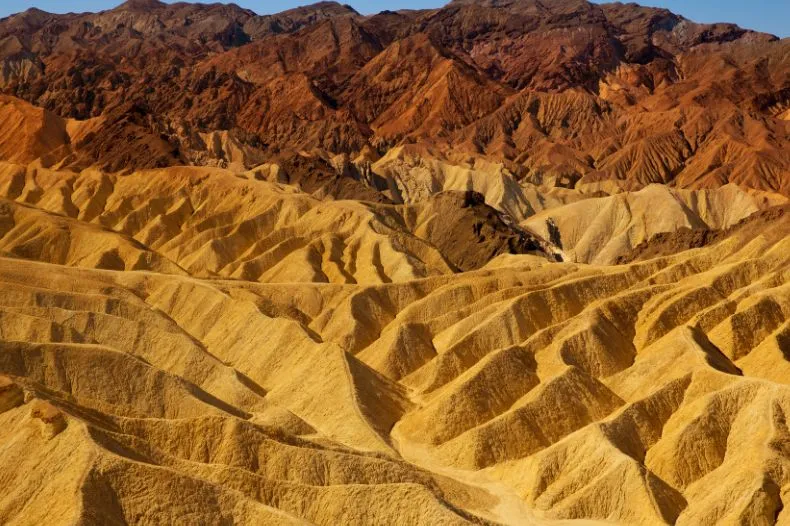
Death Valley National Park, which stretches over the parched regions of California and Nevada, is an environment of extremes.
As the country’s hottest, driest, and lowest national park, Badwater Basin boasts a variety of arid and desolate landscapes, including expansive dunes, untamed canyons, and the salt flats of the country’s lowest point, which is 282 feet below sea level.
Death Valley National Park, which spans more than 3.4 million acres, is located near the boundary of California and Nevada. Beatty, Nevada, is the closest town to the Furnace Creek Visitor Centre, situated around 33 miles away.
Not only is Death Valley National Park one of the greatest places to visit in March, but it’s also a top winter destination. Furthermore, Death Valley is in a state of transformation in March itself.
The weather is milder, and if there has been any rain during the winter, wildflower blooms may be beginning, particularly in the park’s lower reaches.
Death Valley’s March isn’t as sweltering as its name would indicate. Pleasantly warm days are possible, with highs of 70 to 80°F (21-27°C). In the evenings 50s to 60s°F (10–15°C) a little colder. Rainfall is infrequent, but when it does occur, it’s spectacular—especially if it delivers wildflowers.
Gateway Arch National Park

The Gateway Arch in St. Louis, which rises along the banks of the Mississippi River, is a well-known representation of American exploration and westward migration and is one of the best National parks to visit in March.
The centerpiece of Gateway Arch National Park, this gleaming 630-foot stainless steel structure offers breathtaking views of the Mississippi River and the cityscape below. The park itself provides a window into the past when St. Louis served as the busy entryway for pioneers heading into the uncharted West.
March is a perfect time to avoid the summer crowds and visit St. Louis and the Gateway Arch, as well as to take a stroll along the riverside and see inside exhibitions.
Around the arch, you may see the first indications of springtime foliage and flowers as the park passes from winter to spring. March is a month that marks the change from winter to spring, thus the weather may be very unpredictable in Gateway Arch National Park, especially in St. Louis.
Daytime averages can be found between the upper 40s and mid-60s °F (8-18°C). At night, the temperature can dip to the low 30s °F (0–4 °C), while it may infrequently drop lower.
Grand Canyon National Park
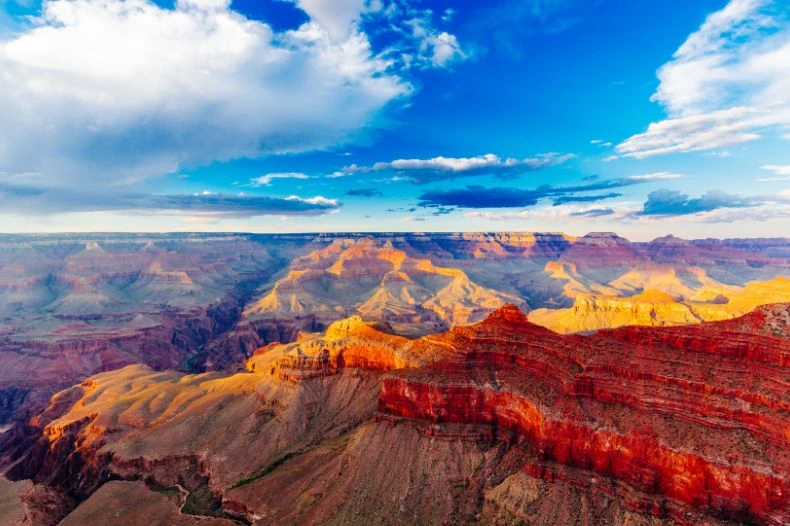
Earth opens out to reveal a two-billion-year-old story in the Grand Canyon. Grand Canyon National Park, which is located in Arizona, is a monument to the strength and tenacity of nature in addition to providing visitors with breathtaking views.
Here, the Colorado River went to town, didn’t it? This enormous gorge, which is 277 miles long and 18 miles wide, features sheer cliffs, deep basins, and towering buttes. This mile-deep wonder will not let you down, whether your goals are to walk, raft, or simply take in the view. And believe us, these sunsets? Unreal.
Northern Arizona is home to the 1.2 million-acre Grand Canyon National Park. The main South Rim entrance to the park is approximately 7 miles from the town of Tusayan.
The South Rim of the Grand Canyon is easier to reach in March, and as the snow melts, fresh vistas and insights become available. The amount of visitors is controlled, and the air is fresher than it is in the summer.
The Grand Canyon in March is a mixed bag. Remember, this is the Grand Canyon; evenings can be chilly, frequently hovering around the 20s°F (-6 to -2°C).
Days at the South Rim are pleasant, with temperatures in the 40s and 50s°F (4-15°C). Although the bottom of the canyon can get warm, the rim can get cooler, and there can be a little snowfall there.
Even though it might sound a little cool, we would much prefer to be a little chilly at the Grand Canyon than melt in the July heat.
Petrified Forest National Park
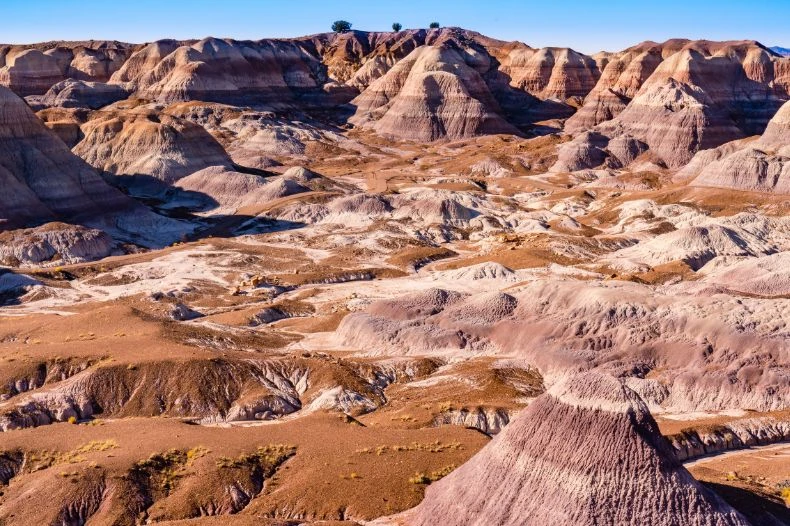
Has wood ever turned into stone? At Arizona’s Petrified Forest National Park, there is no wizardry at all—just the power of ageing.
The park, which is well-known for its enormous amounts of petrified wood, provides a glimpse into a world that existed more than 200 million years ago thanks to its vividly colored fossilized logs.
However, the park is home to several geological formations, badlands, and artefacts from human history, including historic buildings and prehistoric petroglyphs, that can be found beyond the stone remains of former woods.
The roughly 221,390-acre Petrified Forest National Park is located in northeastern Arizona. The park is about 25 miles west of the town of Holbrook.
As with Arizona’s more famous National Park, Petrified Forest gets hot throughout the summer months. March is a fantastic month to visit because of the lower temps!
Even though it can be cool in the mornings and evenings, the daytime temperatures will be moderate. And with any luck, you might be able to view the park covered in a layer of snow.
March daytime temperatures are usually in the mid-50s to mid-60s °F (12-18°C). On the other hand, nights can be colder, frequently falling to the high 20s or even lower 30s °F (about -1 to 0°C).
Pinnacles National Park
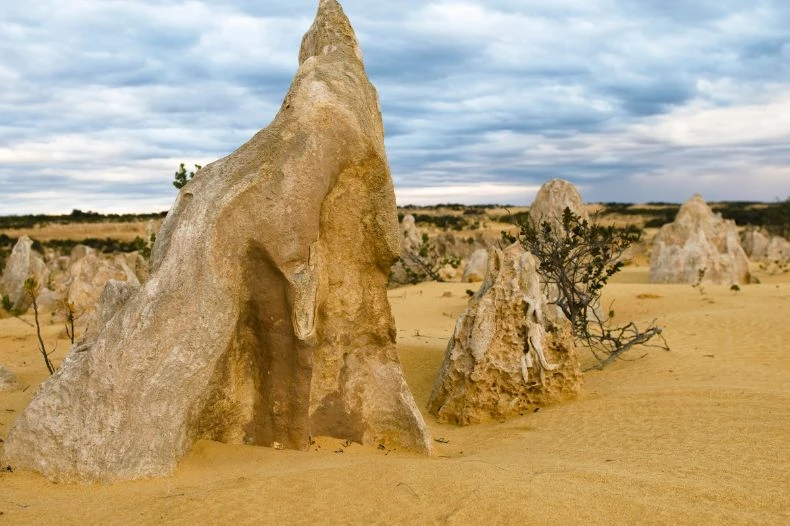
Pinnacles National Park, tucked away in the Salinas Valley of California, boasts alien-looking rock formations. With a variety of tall spires, winding talus caverns, and jagged canyons, the park was formed by ancient volcanic eruptions and eroded over millions of years. And you might even see a California condor if you’re lucky.
Central California is home to the roughly 26,000-acre Pinnacles National Park. About 30 kilometers to the west of the park’s east entrance is the closest town, Soledad.
Pinnacles is among the best National Parks to visit in March for a variety of reasons! First of all, March brings lower temperatures to Pinnacles, which enhances the enjoyment of hikes.
For those who love birds, this month also heralds the start of the California condor nesting season. Furthermore, the caves are frequently open.
March is a pretty good month to visit Pinnacles. It’s ideal hiking weather, with daily highs in the 60s to 20s degrees Fahrenheit (15–20°C). The temperature dips into the 40s°F (4–9°C) when the stars come out, so you might need a sweatshirt. It can rain a little, so perhaps have a poncho ready.
Zion National Park
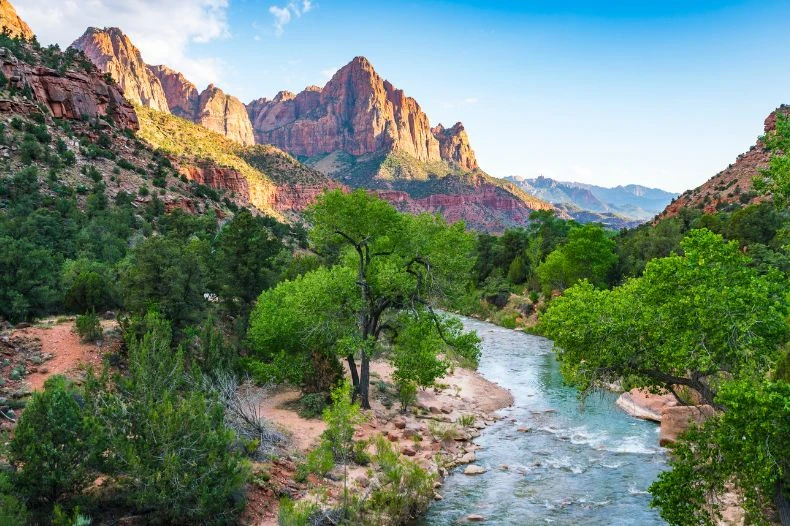
Enter Utah’s first national park and you’ll see why it’s sometimes referred to as a sanctuary—it’s that breathtakingly beautiful. With its sculpted canyons and towering cliffs, Zion National Park offers a striking setting.
Take on a challenging climb to Angels Landing or navigate The Narrows. Zion is not just a place to visit, but an experience with a wide variety of flora, fauna, and historical artifacts. For those who believe they have seen it all, the lesser-known treasure of the Kolob Canyons portion is now essentially on display.
Situated in southwest Utah, Zion National Park spans approximately 147,000 acres. Conveniently, the primary entry to the park is right outside the gateway town of Springdale.
March is a great time to visit Zion to see the park’s waterfalls, which are fueled by snow-melt from higher altitudes. There are more vistas of the budding springtime scenery from routes like the Riverside Walk, and the Virgin River runs fuller.
There can be more people during Spring Break, but overall there are fewer people than during the busiest summer months.
Zion starts to withstand the cold of winter in March. During the day, the average temperature hovers between the 50s and 60s°F (10-20°C).
The park can still feel the effects of winter, though, as night falls and the temperature drops to the 30s°F (0–4°C). Rain showers are more typical, but if you’re lucky, late snow may dust the crimson cliffs. In either case, layer up.
Arches National Park
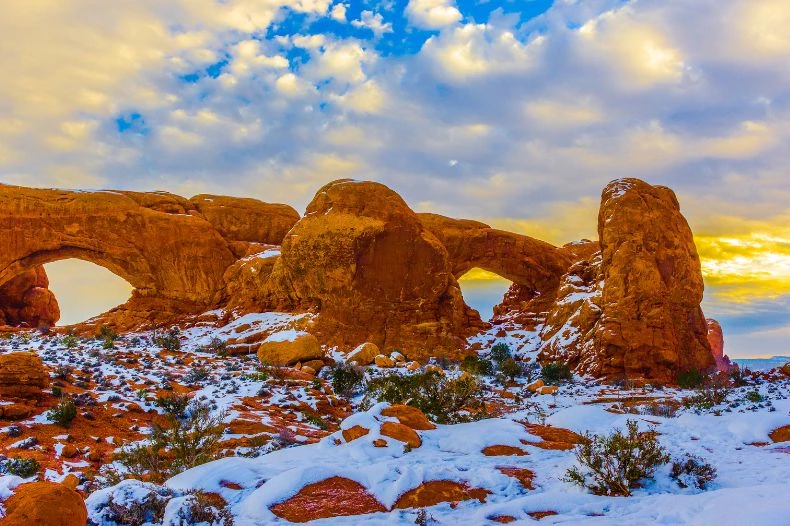
Situated in southeast Utah, Arches National Park is home to more than 2,000 naturally occurring stone arches in addition to hundreds of towering pinnacles, enormous fins, and balancing rocks. Also, it is one of the best National parks to visit in March.
This unusual terrain, which spans 76,679 acres, was formed over millions of years by erosion, resulting in an amazing variety of geological formations. Visitors from all over the world flock to the park to take in its famous attractions, such as the Landscape Arch and Delicate Arch.
Southeastern Utah is home to Arches National Park. About five miles to the north of Moab is where it is located. March is a great month to hike and explore without getting too hot because it has cooler temps before the summer heat arrives.
March also happens to be before the busiest travel period, so there are fewer people around to take in the park’s famous arches and scenery. In addition, the already breathtaking red granite scenery is enhanced with colorful bursts from the arrival of early spring blossoms.
In Arches, March is a month of transformation. While nightly lows sometimes reach the 30s°F (about 0–4°C), daytime highs typically range from the 50s to 70s°F (10–21°C).
Bryce Canyon National Park
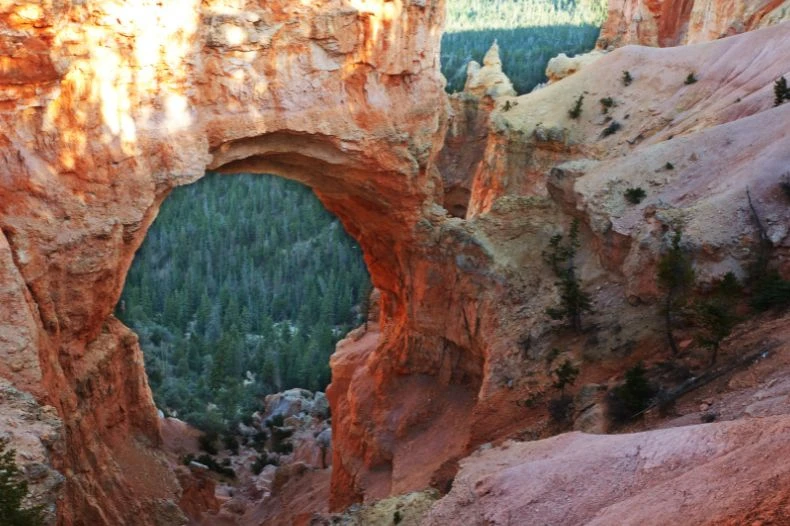
Bryce Canyon National Park situated in southwest Utah is well-known for its unusual geological formations, or hoodoos. Unexpectedly, Bryce isn’t a canyon at all, but rather a sequence of amphitheaters carved out of the Paunsaugunt Plateau.
Packed with angular walls, winding passageways, and the iconic hoodoos—spire-like red rock pillars formed by millennia of erosion—Bryce offers a surreal, otherworldly landscape.
Bryce Canyon National Park, which spans approximately 35,835 acres, is situated in southwest Utah on the eastern edge of the Paunsaugunt Plateau. Zion National Park, another well-known park, is roughly 40 miles away. The town of Panguitch is about 20 miles southeast of the park’s main entrance.
March offers fewer tourists, colder weather, and the chance to see the final snowfall on the famous hoodoos. The splendour of the park may be enhanced by the emergence of new streams and waterfalls as the snow melts.
March can still be rather cool in Bryce Canyon. In general, daytime temperatures fall between the 30s and 50s°F (0–10°C), while nighttime lows can occasionally approach the -9 to -4°C. It’s a wonderful time to explore the park as the chill of winter gives way but be prepared for a variety of weather conditions.
Conclusion
So these are the best national parks to visit in March that provide something unique as the planet begins to gently spring to life.
Whether you’re searching for gorgeous wildflowers in warmer regions or spring skiing in some of the higher altitude areas, these amazing parks will offer a welcome diversion from your everyday grind and make your days more visually pleasing.
Arrange your travel now and get ready for a once-in-a-lifetime experience. Always be cautious and show consideration for the parks you visit. Observe the guidelines, only snap photos, and leave no trace.
It is our collective duty to preserve these fragile ecosystems for the benefit of not just ourselves but also upcoming generations of naturalists. We can guarantee the survival of these exceptional locations by being aware of our surroundings when visiting national parks.
